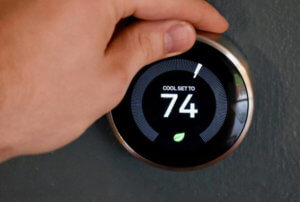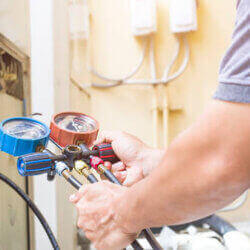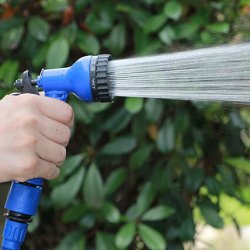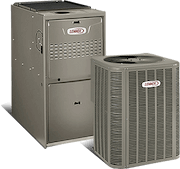
The thermostat is the interface between you and your central air conditioning system. It seems like a straightforward concept on the surface. However, managing thermostat settings needs a little more effort and preparation than simply "increase it when it’s chilly, and decrease it when it’s warmer." The thermostat is not a throttle, and using it as such results in energy waste, an unpleasant home, and a possibly faulty air conditioning system during the summer. Following some energy efficient thermostat settings can help you get the most out of your system and improve comfort.
Below, you can find the two most important setting tips to ensure that your thermostat is energy efficient throughout the summer, along with a warning to ensure your systems keep working.
If you are planning to install a new programmable thermostat or would like help learning more about which thermostat is best for your home, choose only the best St. Louis HVAC contractors at Galmiche & Sons. You can reach us at 314-993-1110.
3 Tips for Energy Efficient Thermostat Settings in the Summer
Here are the two most important tips and a critical warning to ensure the most energy efficient thermostat settings in the summer.
Keep the Thermostat Settings Steady
It is wasteful to adjust the thermostat setting throughout the day based on how you are feeling. The thermostat, as previously stated, is not a throttle. It is a switch. Either the air conditioner works, or it does not.
When the thermostat is set to a lower setting than the current interior temperature, the air conditioner will work until it achieves that temperature. Keeping the temperature consistent during the day while people are at home means that the air conditioning system will not have to start and stop as often.
Choose a comfortable and energy efficient thermostat setting for when people are at home throughout the day and maintain it until they go to bed in the evening, then raise it by 8°.
A Low Thermostat Setting Does Not Cool Your Home Faster
If you keep lowering the thermostat, your house will not get cooler any faster – you will just keep the AC running until it hits that degree, which is usually too chilly for the house. When the home temperature is too low, outside heat is allowed to migrate inside more quickly, undermining the purpose of keeping it low, to begin with. The heat uptake is slower the closer the internal and exterior temperatures are.

It is recommended by the Department of Energy that a temperature of around 78°F is the ideal energy efficient thermostat setting for most individuals. If this feels excessively hot, drop the temperature a few degrees and then gradually increase it by one degree every day to allow people to acclimate.
(Warning!) Do Not Drop the Temperature Below 72 Degrees!
When the thermostat is set to lower temperatures, the AC coils are more likely to freeze. What temperature is considered to be too low? No matter how hot it is outside, it is recommended that the air conditioner be set no lower than 72°F. It is far worse to have a frozen coil that prevents the air conditioner from cooling at all and necessitates bringing in professionals to thaw the coil. If you try to remove the ice by yourself, you risk damaging the coil.
Contact a Professional HVAC Technician for Thermostat Services
Galmiche & Sons is at your service if you need a skilled HVAC specialist in St. Louis. Since 1950, we have been providing HVAC repair and maintenance services. If you need air conditioner repair or just need help keeping your system running efficiently, get in touch with our experienced heating and air conditioning professionals to learn how we can help.









